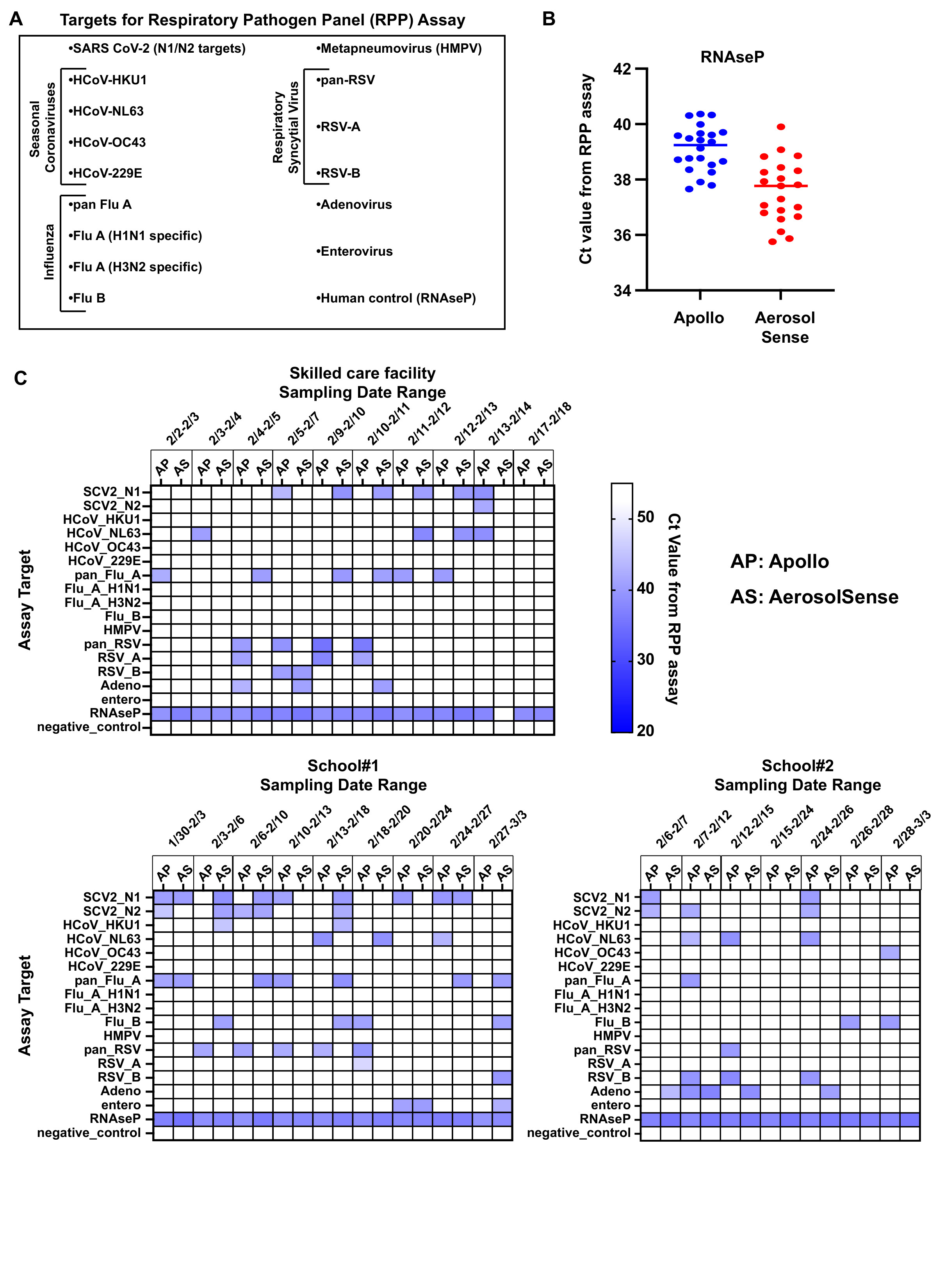Initial Testing of the InBio Apollo Air Sampler vs. Thermo Fisher AerosolSense in Public Settings Using Standard Biotools BiomarkTM X9 platform
Research Updates ·As part of our ongoing efforts to evaluate alternative air sampling technologies for monitoring respiratory viral pathogens, we recently conducted a comparative study between the InBio Apollo air sampler and the Thermo Fisher AerosolSense air sampler at three locations.
Our goal was to assess the performance of the InBio Apollo air sampler in detecting respiratory pathogens and to determine its relative sensitivity in real-world environments compared to the Thermo Fisher AerosolSense air sampler.
Field Test Overview
The study occurred at three different sites: two were elementary schools, and the third was a skilled care facility. We deployed the Apollo air samplers in areas with traffic patterns similar to the AerosolSense air samplers already at the same locations. Of note, the samplers were not always placed in the same rooms at each site. Samples were collected from both Apollo and AerosolSense samplers every 3-4 days from the elementary schools and every 24 hours from the skilled care facility. Over several weeks, we collected air samples, isolated RNA from each sample, and performed PCR using a custom probe-based assay from Standard Biotools run on the Biomark X9 system. The Standard Biotools custom Respiratory Pathogen Panel (RPP) assay utilizes microfluidic chambers to simultaneously run 2304 individual PCR assays to detect multiple respiratory pathogens (Figure 1A).
While other platforms, such as digital PCR (dPCR), may be more sensitive for the comparative analyses performed here, they currently do not allow for high sample throughput while maximizing the number of targets detected. The RPP assay assesses the presence of RNAse P, a commonly used marker for human genetic material, and the presence of genetic material from several seasonal respiratory pathogens (Figure 1A).
Key Findings
- Apollo detected less RNAse P – One of the primary observations from our study was that the Apollo air samplers had higher Ct values (detected less RNAse P) than the AerosolSense air samplers (Figure 1B). RNAse P serves as an indicator of human biological material in the air, and its lower detection in Apollo samples suggests differences in either air collection or genetic material elution efficiency between the two different sampling platforms.
- Detection of respiratory pathogen genetic material – Despite the lower RNAse P levels, the Apollo air sampler could still effectively capture genetic material from several seasonal respiratory pathogens at all three testing sites (Figure 1C). While the pathogens detected by the Apollo did not always match what was detected by the AerosolSense air sampler for the same site/date, the pathogens detected by the Apollo and AerosolSense were similar to viruses observed on other air samplers in the greater community (https://publichealthmdc.com/your-health/respiratory-illness/dashboard). This demonstrates that while there may be variations in biological material collection, the Apollo unit can detect relevant genetic material from seasonal respiratory viruses.
Figure 1

Implications for Airborne Pathogen Monitoring
Our findings suggest that while there are differences in air collection or genetic material elution efficiency from Apollo samples compared to AerosolSense samples, the Apollo is a viable option for detecting respiratory pathogens in indoor environments. It also has several advantages compared to the AerosolSense air sampler: the Apollo is smaller, quieter, easier to operate, and less expensive than the AerosolSense air sampler. Overall, this could have important implications for schools, healthcare facilities, and other settings where air monitoring could be used to track the presence of airborne pathogens.
Next Steps
Moving forward, we aim to conduct additional testing to:
- Further evaluate and improve elution of genetic material from Apollo filters.
- Continue to assess the performance of the Apollo at the three sites throughout the remainder of the respiratory virus season.
- Train new laboratory staff members on how to elute genetic material from Apollo filters.
Testing new air samplers that are less expensive, quieter, and easier to operate is appealing to staff members at these sites. Furthermore, the Apollo’s ease of use may make air monitoring more feasible and attractive for new sampling sites. We continue to improve air monitoring technologies and expand our air sampling program!